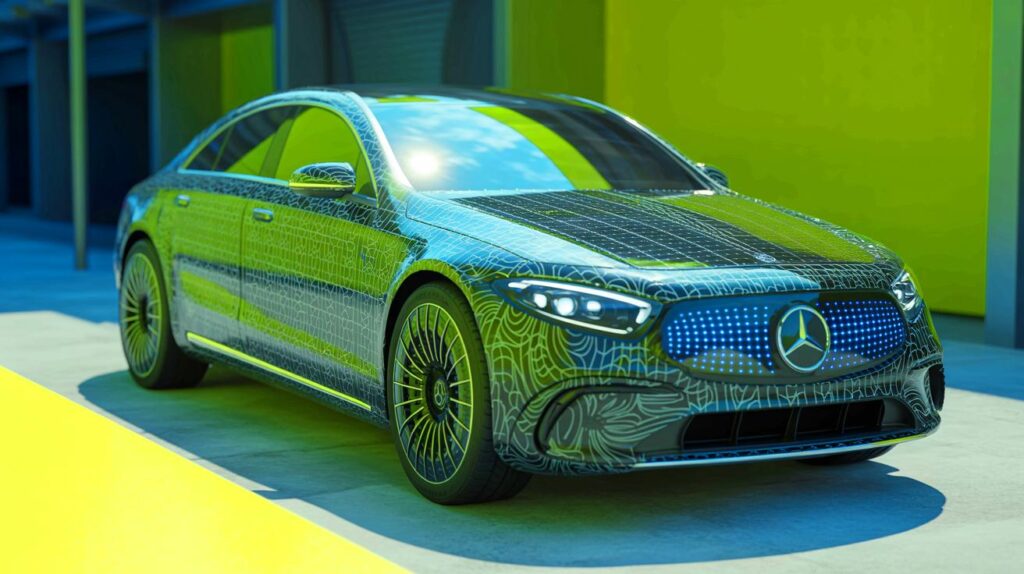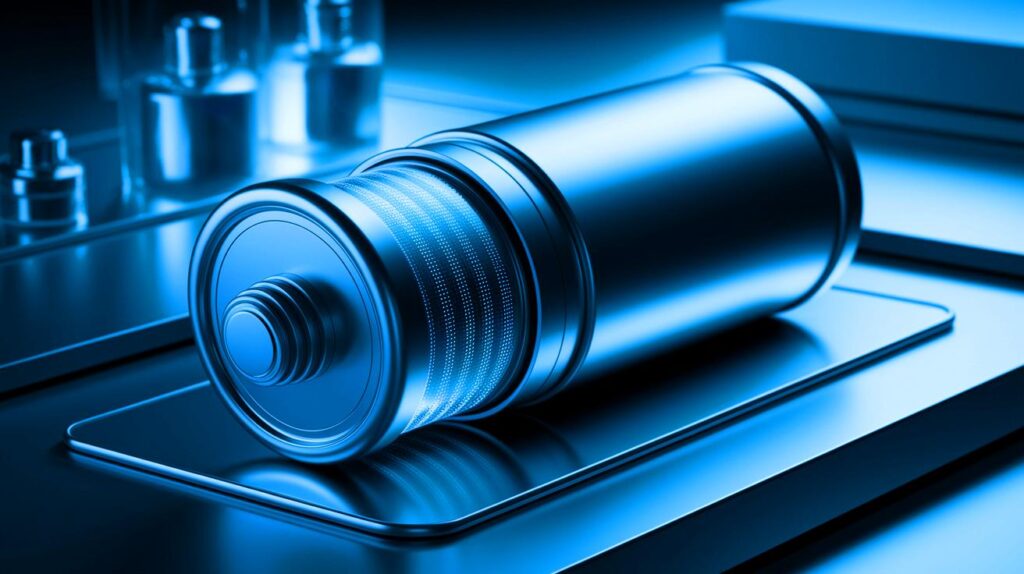| In Brief |
|
The race for innovation in the electric vehicle sector is accelerating rapidly. Mercedes-Benz, the prestigious German manufacturer, has recently unveiled a technology that could revolutionize our concept of electric vehicle autonomy. Thanks to innovative solar paint, these cars could soon operate without frequent recharging. This technological breakthrough, which integrates photovoltaic nanoparticles into a thin layer of paint, promises to turn every vehicle into a mobile power plant. But what are the challenges and promises of this innovation?
A Novel Concept: Solar Paint
Mercedes-Benz has made a bold move with the announcement of its solar paint, an advanced technology incorporating photovoltaic nanoparticles. This paint weighs only 50 grams per square meter and has a conversion efficiency of 20%, comparable to the best monocrystalline solar panels. By turning the vehicle’s body into a renewable energy source, this innovation offers a new perspective on electric car autonomy. These nanoparticles allow the capture of sunlight and its conversion into electrical energy, directly usable by the vehicle.
Unlike traditional solar panels, often bulky in design, this paint perfectly adapts to the various shapes of vehicles, increasing the active surface area to capture more light. This flexibility allows electricity generation on all surfaces exposed to sunlight, maximizing the energy efficiency of equipped cars.
Impressive Performance in Various Conditions
The potential of this solar paint is particularly noteworthy in sunny cities like Los Angeles. An average SUV could travel up to 20,000 kilometers a year solely on solar energy. Even in less sunny regions, such as Stuttgart, this technology could cover approximately 60% of daily trips, or about 12,000 kilometers a year. These figures illustrate the potential impact of this innovation on reducing dependence on traditional charging stations.
A simple table could illustrate this variation according to sunlight exposure:
| City | Annual Additional Kilometers Thanks to Solar Energy |
|---|---|
| Los Angeles | 20,000 km |
| Stuttgart | 12,000 km |
However, despite its advantages, the efficiency of this paint heavily depends on weather conditions and sunlight, which could limit its effectiveness in some areas.
A Positive Environmental Impact
Beyond its technical performance, this solar paint lays the groundwork for a more sustainable model. It contains neither silicon nor rare earths, materials that are often costly and challenging to extract. Made from non-toxic and recyclable raw materials, it is part of an environmentally friendly approach. This strategy could reduce the automotive industry’s ecological footprint while offering a viable solution to the infrastructure charging inadequacies.
In rural or remote areas, where charging stations are scarce, this technology would reduce dependence on existing infrastructure while limiting the investments needed for future development.
The Challenges to Overcome Before Mass Adoption
Despite the promises of this technology, several challenges need to be addressed before it becomes a standard in the automotive industry. The energy yield of solar paint can be affected by dirt or shadows, necessitating regular maintenance to maintain efficiency. Furthermore, Mercedes is working on complementary innovations, such as onboard energy management systems to optimize the use of produced energy.
An integrated converter could regulate and stabilize the energy, ensuring a constant voltage and optimizing the bidirectional charging of vehicles. These technical advances are crucial to ensure the reliability and durability of this innovative energy solution.
As Mercedes-Benz continues to develop and refine this technology, one question remains: will we soon witness a new era where electric cars are fully autonomous thanks to solar energy? What will be the next steps for this vision to become a concrete reality on our roads?








